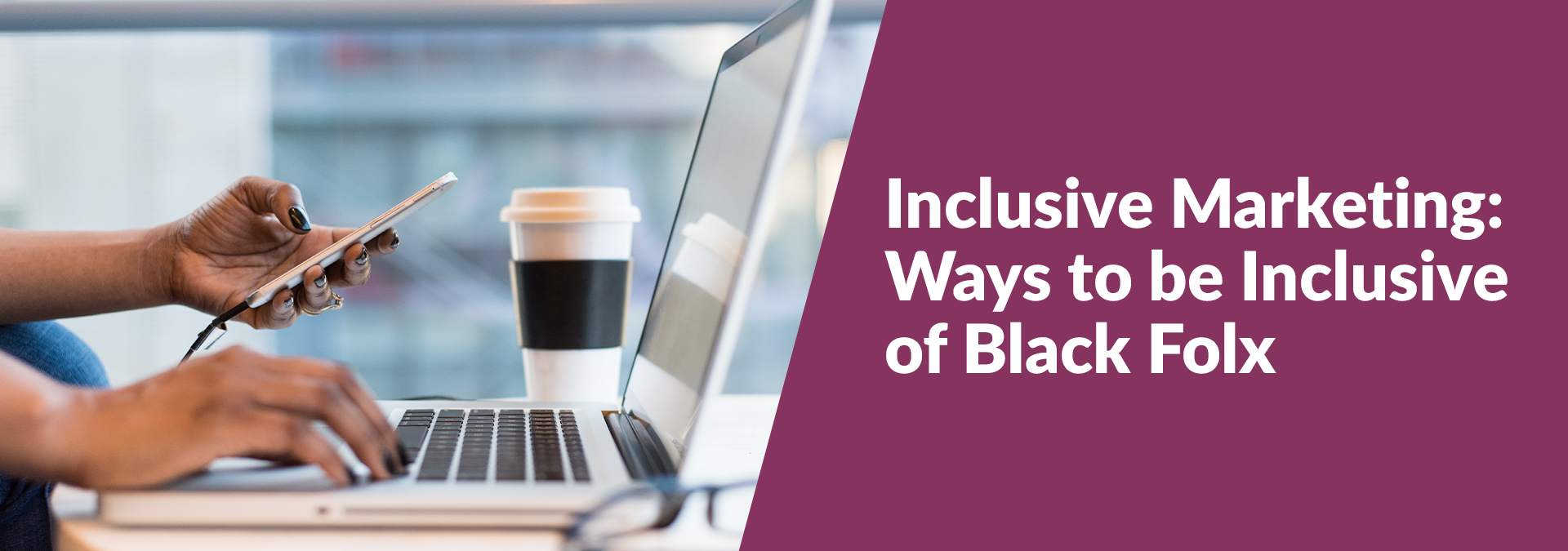As marketers, we have a responsibility to create content that sells a product. If we only create content for a small segment of potential buyers, we’re not only doing our clients an injustice, but we’re doing society an injustice. It’s imperative that we create inclusive marketing that meets the needs of all potential buyers.
While this covers buyers of different races, backgrounds, socioeconomic statuses, etc., in this blog I’m focusing on ways to be more inclusive of Black folx in marketing materials.
Here are six ways to be more mindful of your marketing and create more inclusive content.
Incorporate more inclusive photography.
The perfect photo creates an emotional response from our audience that drives them to take a desired action. So it’s important we use photography wisely.
As you’re building a website, campaign, or piece of content, it’s important to ensure you use a diverse range of people in your photography, specifically utilizing photos with Black models.
Stock sites, even free stock sites, provide options with subjects of different races, so choose mindfully.
If you’re doing a photoshoot, hire diverse talent! Make sure to not only incorporate Black models, but to also pay them equally.
Diversify your marketing spend.
As you put together your marketing budgets, do you pay attention to where you’re investing these dollars?
It’s imperative to pay attention to where your client’s marketing spend is going. If you’re doing a media buy, look to partner with a Black-owned media buying company and look for ad opportunities on Black-owned channels.
If you utilize agency partners, do you pay attention to their leadership team makeup? When you vet third-party application partners, do you look for opportunities to partner with Black-owned businesses?
Be mindful of language.
What sort of language so you use in your marketing? Just like the photography we choose, the words we use matter. For example, not all Black folx identify as African American, yet African American is often used.
This should go without saying, but it’s crucial to watch for any language with anti-Black and racist connotations or history.
Capitalize Black!
Lowercase black is a color. Black (capitalized) is a culture. And even many media outlets are starting to update their style with this word and its capitalization. The New York Times recently published an article alerting readers that the change was being made and AP News even updated their rules to incorporate this.
Take a stand and stand by it through inclusive marketing.
Did your company make a post in solidarity with Black Lives Matter?
What have you done since then?
While showing solidarity can help showcase your support of a cause, if it’s not backed by tangible action it is simply performative allyship.
Once you make a stand you have to stand by it. One way to do this is by starting to incorporate the examples above, but it takes more than just changing up your photography and language.
If you have an office book club, opt for local, Black-owned bookstores (Semicolon is a great option if you’re in Chicago) instead of Amazon, ensure you’re creating an inclusive work environment and using diverse hiring channels for your recruitment efforts, and consider making Juneteenth a company holiday, just to name a few.
Hold your leadership team accountable.
It’s important to hold leadership accountable and if you are the leadership team, hold yourself accountable. Creating visually inclusive content is only performative allyship if you aren’t doing the work behind the scenes to create an inclusive environment.
If you’ve taken a stance that you support Black Lives Matter and want to create inclusive marketing, you can’t stop after a week or a month. When the hashtags stop trending and the news coverage starts to shift, it’s crucial to continue supporting.
Commit to creating inclusive marketing.
The most important part of inclusive marketing is ensuring that you make a long-term commitment. As mentioned above, you can’t stop supporting a group after a week or a month. It’s ongoing, active changes in mindset, thinking, and behavior that contribute to lasting change.
Have questions about how to make your marketing more inclusive? Contact me to talk more about marketing inclusivity.


0 Comments